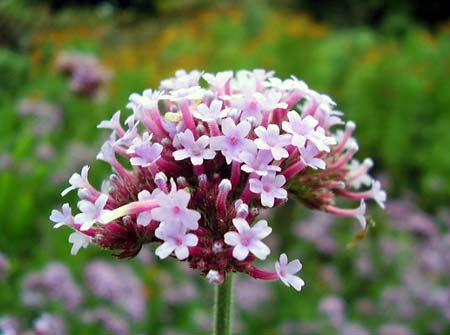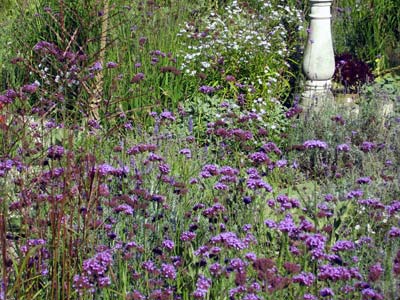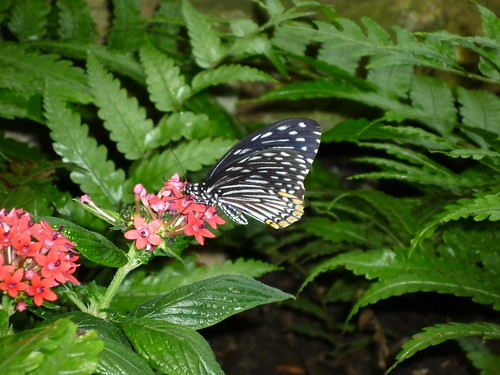
Growing Verbena Bonariensis
Purple wisps in September make this Verbena a favourite.

Verbena Bonariensis
- Common Name: Verbena
- Genus: Verbena
- Species: bonariensis
- Exposure: Full sun / but also does well in partial sun
- Hardiness: Half Hardy
- Soil type: Well-drained/light, Moist
- Height: 130-160cm
- Spread: 45cm
- Time to plant seeds: March to April or late summer.
- Flowering period: August to October
Verbena Bonariensis has been enjoying a resurgence of interest as people increasingly become interested in the ‘priarie garden’. Verbena Bonariensis is ideal for this informal style of planting as it can shoot up offering small lilac flowers from June to September.
- Verbena Bonariensis can grow up to 2 metres and its height offers extra interest, without casting too much shade on surrounding plants.
- It does well in sunny, well drained soil. The soil doesn’t need to be rich and will even come through cracks in paving stones. It is susceptible to cold frosts; it is advised to wait until early spring before cutting back stems.
- It will seed freely once established, it even can become a little dominating, but, if you are happy for a free flowing garden style it is ideal.
- I love the way Verbena bonariensis can grow up between different plants.

Repeat Season Flowering
After flowering, you can cut back to a few inches off ground level. This will then grow again. However, after one or two seasons, the plant becomes weaker. It is better to allow new plants to grow from self-seed.
Sowing
You can sow in Autumn for mid summer flowering. It was also flower in first year, if you sow in early spring. It is a good early Autumn flower. The seed heads can be attractive even after first frosts.
I find it is very successful to sow in the ground. It seems nice and resistant to slugs and snails – which is real boon for outdoor sowing.

Butterfly and flowers by Kew CC BY-NC-SA 2.0
- Verbena bonariensi Seeds at Thompson & Morgan

Verbena Bonariensis is one of my favourite plants. This is actually poking up from some cracks in the patio; giving an impact of meadow planting. It like its informality, height and delicacy of flower. I think it is best when grown in random clumps.
Generally verbena bonariensis grows well from seed. Scatter some on the soil in late July / August and if lucky it will continue to self sow for many years.
Verbena bonariensis looks to be a special purple in the fading light of autumn. It is strange how flowers look different in different lights.
When laying out a garden for colour consider the position of the sun, in spring and autumn, which will dictate the colour temperature and saturation of the light.
This verbena is very attractive to butterflies
Anemone Japonica looks pink in the shade of the house. In full sun the colour is burnt out to a less attractive lighter shade of pink.


One thought on “Growing Verbena Bonariensis”
Comments are closed.